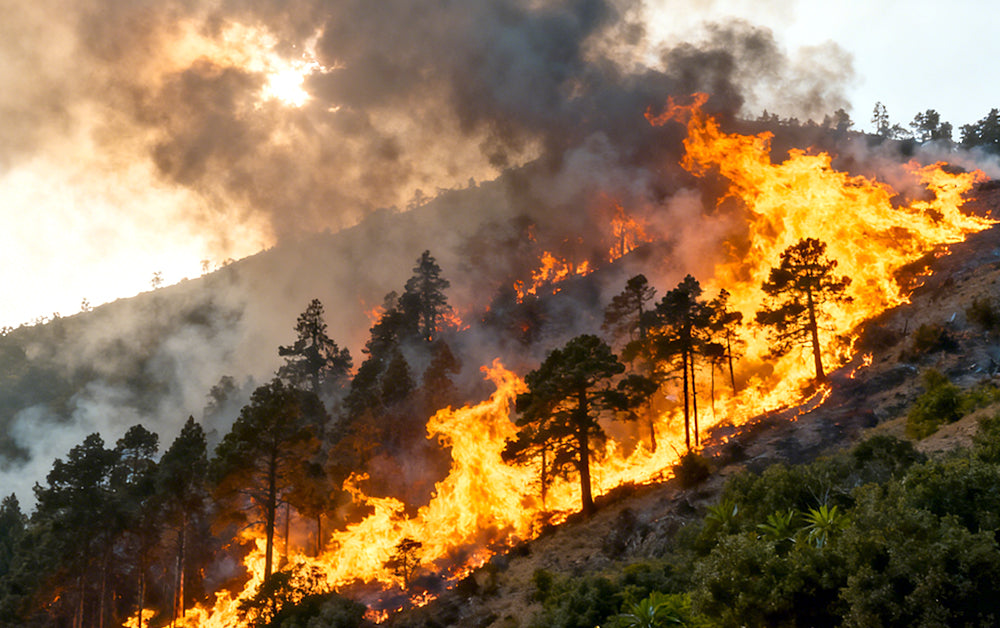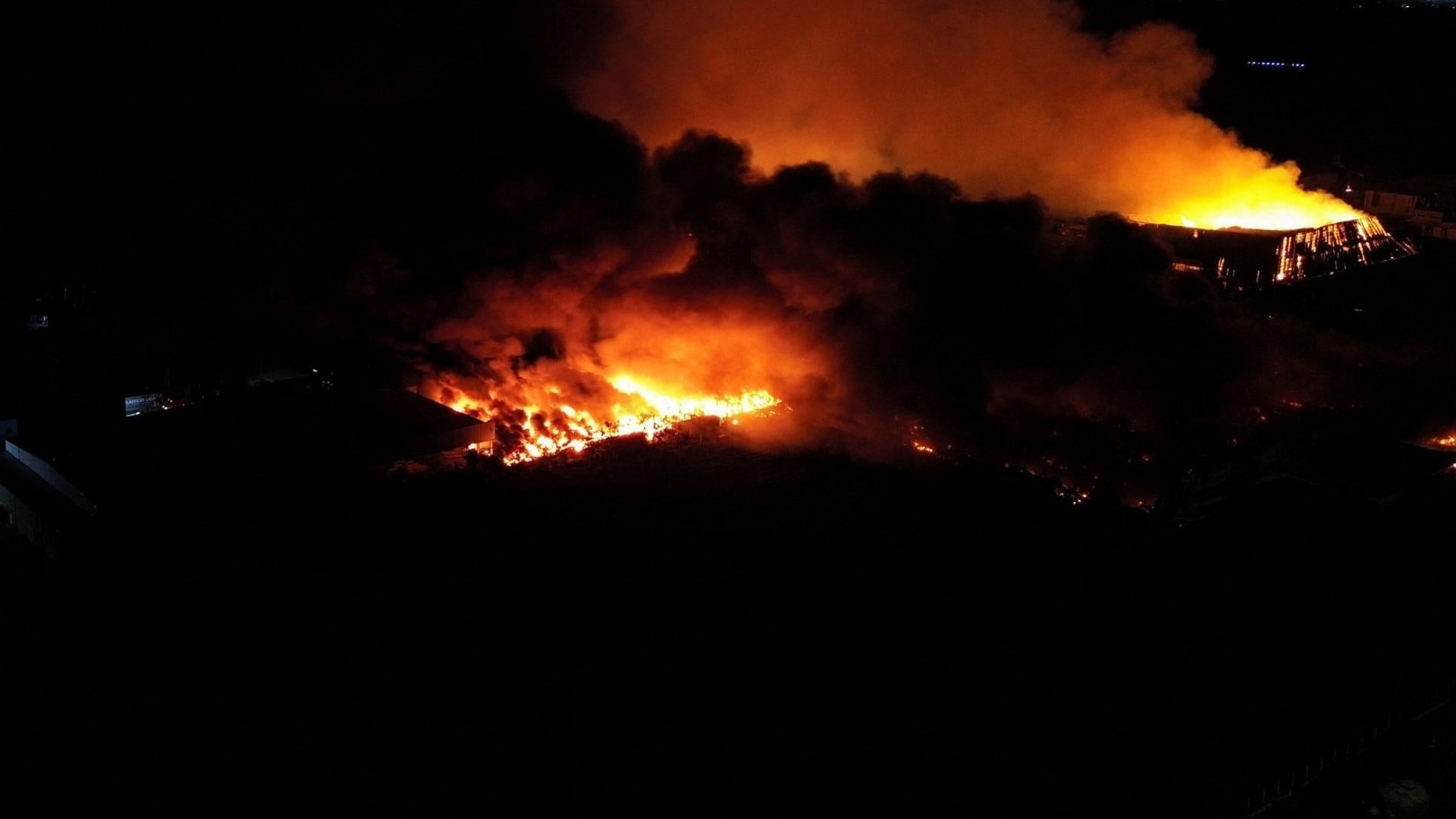1. A Warmer Planet, a Hotter Fire Season
The link between climate and wildfires is no longer theoretical. According to the National Oceanic and Atmospheric Administration (NOAA, 2024), the past decade has been the warmest on record, with average global surface temperatures now 2.32 °F(1.29 °C) higher than pre-industrial levels.
That additional heat dries vegetation and lengthens the fire season across North America. The U.S. National Interagency Fire Center (NIFC, 2024) reports that approximately 8.9 million acres burned across the United States in 2024, exceeding the average annual wildfire acreage of the past decade.
But the impact extends far beyond the flames. When wildfires burn hundreds of miles away, their smoke particles (PM₂.₅) travel through the atmosphere and seep indoors. A 2025 study in Nature Sustainability found that even small increases in wildfire-specific PM₂.₅ are linked to measurable rises in emergency-room visits for respiratory illness.

2. Invisible Smoke, Real Health Risks
Unlike visible flames, fine smoke particles are microscopic—less than 2.5 microns wide—and can penetrate deep into the lungs and bloodstream. The U.S. Environmental Protection Agency (EPA, 2023) warns that long-term exposure raises the risk of asthma, heart disease, and stroke, especially for children, older adults, and those with pre-existing conditions.
Even short-term exposure can cause headaches, fatigue, or dizziness—often long before visible haze appears. That’s why experts stress that every home needs a reliable smoke-alarm system: it not only detects fires but also alerts occupants when indoor air quality changes rapidly.

3. Why UL 217 Certification Matters
Not all smoke alarms perform the same way. The UL 217 standard, developed by Underwriters Laboratories (UL), defines how residential smoke alarms must detect both flaming and smoldering fires while minimizing false alerts from cooking or steam.
UL 217 testing evaluates:
Sensitivity — Ensures the alarm reacts quickly to dangerous smoke concentrations.
Environmental stability — Confirms reliable operation in hot, cold, humid, or dusty conditions.
False-alarm resistance — Reduces nuisance alerts that lead users to disable the device.
If a product does not meet the UL 217 certification requirements, it may either respond too late during a real fire or trigger unnecessarily in daily conditions—reducing both safety and user trust.

4. Siterwell’s Reliable Protection for a Changing Climate
As temperatures rise and wildfire risk becomes a year-round concern, Siterwell’s UL 217–compliant photoelectric smoke alarms provide dependable protection for modern homes.
Key features include:
Early detection of smoldering smoke — Ideal for wildfire-related particles entering through vents or windows.
10-year sealed lithium battery — Provides long-term reliability even during power outages or extreme weather.
False-alarm minimization — Advanced sensing design helps reduce nuisance alerts while maintaining accuracy.
Each device is carefully engineered and tested to ensure stable performance under changing temperature and humidity conditions.

5. Take the Next Step
You can’t control the climate, but you can control your home’s readiness.
Installing UL 217–certified smoke alarms is one of the simplest and most effective ways to adapt to a hotter, more fire-prone world.
Act before the next heat wave. Protect your family today.



